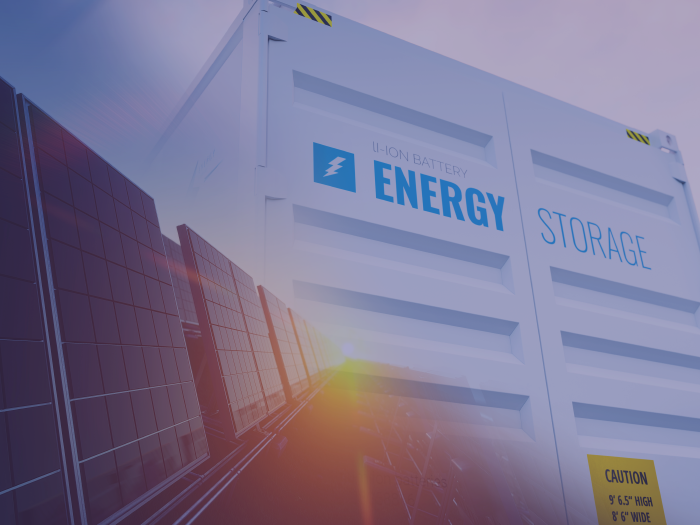News
better business decisions
Posted 1 year ago | 4 minute read

Cutting costs and carbon in industrial and commercial businesses: Q&A with Gareth Ball
For industrial and commercial (I&C) businesses, reducing carbon emissions and cutting costs are top priorities. But where do you start in navigating the path to a decarbonised future?
In this article, GridBeyond’s Head of Solar & Storage Gareth Ball, shares insights on how industrial energy consumers can strategically invest in infrastructure to reduce carbon emissions and costs effectively and discusses effective actions I&C businesses can take, focusing on the role of data, onsite generation, and leadership in strengthening energy control.
Q1: What initial steps should I&C businesses take to reduce carbon emissions and costs effectively?
A: The first step is to conduct a comprehensive energy audit to identify areas where energy is being wasted. This involves analysing energy consumption patterns and pinpointing inefficiencies.
Once you have a clear picture, prioritise projects that offer quick wins. Upgrading to energy-efficient equipment, optimising existing systems and processes and participating in demand response services are some of the immediate actions that can significantly reduce energy consumption and costs.
Additionally, implementing an energy management system (EMS) can help monitor and control energy use in real time, leading to sustained energy savings.
Q2: How can on-site generation contribute to both carbon reduction and cost savings?
A: On-site generation, such as solar PV, wind turbines, or combined heat and power (CHP) systems, can significantly reduce reliance on the grid and lower energy costs.
By generating electricity on-site, businesses can hedge against energy price volatility and ensure a more stable energy supply. For instance, solar PV installations can provide clean, renewable energy during daylight hours, reducing grid dependency and associated carbon emissions. Over time, the savings on energy bills can offset the initial investment in onsite generation. Moreover, excess energy can sometimes be sold back to the grid, creating an additional revenue stream.
Installing a battery storage system on-site can bring further benefits. By storing excess renewables and using it during peak demand times, consumers can significantly reduce their reliance on grid electricity, leading to substantial cost savings over time, while providing a long-term hedge for a portion of energy needs. By consuming stored solar energy instead of feeding it back into the grid, users maximise their use of carbon-free energy (CFE). This not only reduces their carbon footprint but also enhances the overall environmental benefits of their solar investment. It also this also accelerates progress towards their sustainability objectives such as Science Based Targets initiative (SBTi) and RE100. By installing a battery, larger solar systems can be installed than would otherwise be practical, maximising the value of available roof space. The excess energy generated can be stored rather than wasted, leading to increased CFE volume and greater overall energy independence.
Q3: What role does data play in enhancing energy efficiency for I&C businesses?
A: Data is crucial for driving energy efficiency. Advanced data analytics allow businesses to gain insights into their energy consumption patterns and identify inefficiencies that would otherwise go unnoticed.
By leveraging real-time data from smart meters and IoT devices, businesses can implement demand response strategies, adjust operations to off-peak times, and optimise energy use. Data-driven decision-making helps in setting precise energy targets and tracking progress, ensuring continuous improvement. Furthermore, predictive analytics can forecast energy demand, enabling proactive management and reducing unnecessary energy expenditure.
Q4: How can businesses balance the investment in new technologies with cost-effective carbon reduction?
A: Balancing investment with cost-effective carbon reduction requires a strategic approach.
Start by targeting low-hanging fruits that offer a high return on investment, such as energy efficient retrofits or improvements. For larger investments like on-site generation, consider financial mechanisms such as power purchase agreements (PPAs) or leasing options to spread out costs.
Businesses should also explore available grants and incentives for energy projects, GridBeyond and Triodos Energy Transition Europe Fund have committed €10M for the installation of a pipeline of battery storage projects located behind the meter at GridBeyond’s clients’ sites across the UK and Ireland.
Importantly, investing in smart technologies that provide real-time data and analytics can help optimise energy use and identify further savings opportunities. A phased approach, starting with pilot projects to demonstrate benefits, can build the case for broader investments. By focusing on data-driven insights, embracing onsite generation, and fostering strong leadership, I&C businesses can effectively reduce carbon emissions and energy costs. This holistic approach not only strengthens energy control but also enhances competitiveness and sustainability in the long term.

Harnessing the power of battery energy storage systems to optimise solar utilisation- White Paper
Solar energy presents a significant opportunity for both residential and commercial entities to reduce their carbon footprint and energy costs. But, one of the challenges with solar energy is managing the excess power generated during peak sunlight hours.
Learn more




